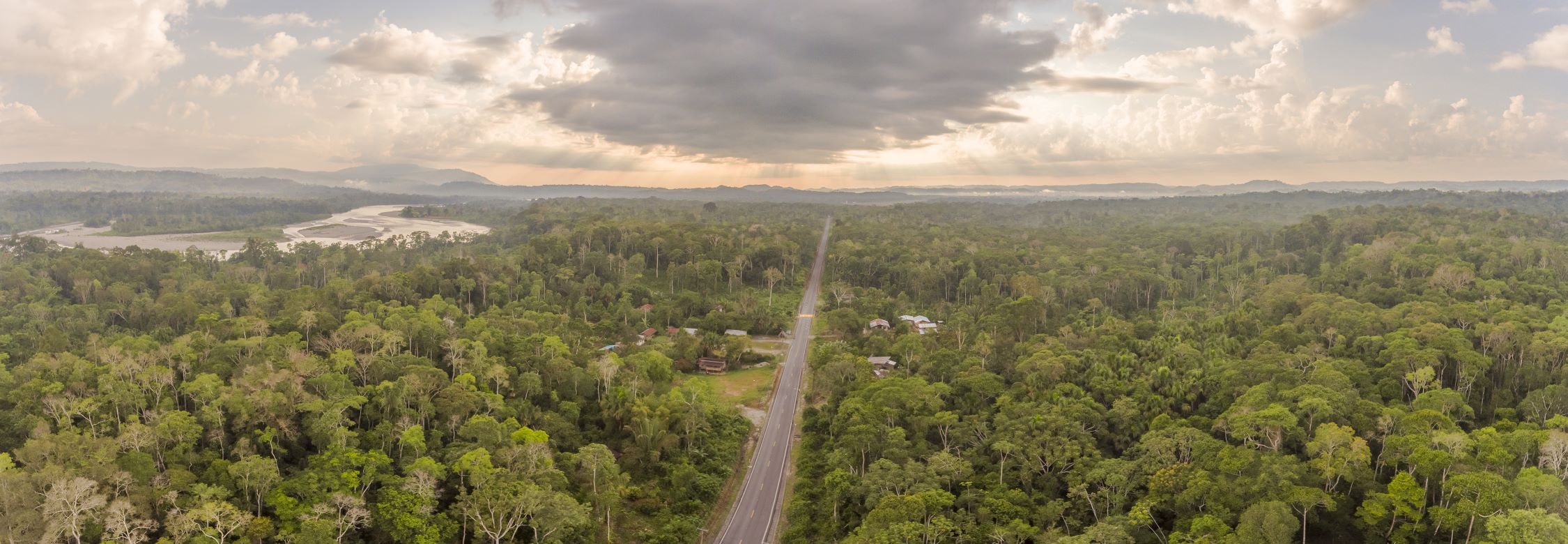- Mongabay has begun publishing a new edition of the book, “A Perfect Storm in the Amazon,” in short installments and in three languages: Spanish, English and Portuguese.
- Author Timothy J. Killeen is an academic and expert who, since the 1980s, has studied the rainforests of Brazil and Bolivia, where he lived for more than 35 years.
- Chronicling the efforts of nine Amazonian countries to curb deforestation, this edition provides an overview of the topics most relevant to the conservation of the region’s biodiversity, ecosystem services and Indigenous cultures, as well as a description of the conventional and sustainable development models that are vying for space within the regional economy.
- Click the “A Perfect Storm in the Amazon” link atop this page to see chapters 1-13 as they are published during 2023.
In 2010, Electronorte initiated the construction of a high-tension (500 kW) transmission line to connect the power plants at Tucuruí and Belo Monte; this line was extended north to the Amazon River with connections to Macapá (Amapá) and Manaus (Amazonas). This ambitious undertaking required the construction of extraordinarily tall tower paillons (300 meters) in order to cross the 2.5-kilometer width of the Lower Amazon. The line roughly parallels the right-of-way of PA-254, an unimproved regional highway, and supplies electricity to dozens of towns and villages that relied previously on expensive energy from small-scale diesel generators.
The transmission line will eventually be extended to Boa Vista (Roraima), following the right-of-way of BR-174. However, its completion has been stalled because it traverses the territories of the Waimiri-Atroari Indigenous people who have questioned aspects of the environmental impact study. Ironically, the need for electricity in Roraima has been exacerbated by the termination of a long-standing supply of electricity from the Guri complex in Venezuela.
Hydropower development has relatively strong support among the inhabitants of both Amapá and Roraima. In Amapá, the D&R unit at Ferreira Gomes (250 MW) and the
R-o-R dam at Cachoeira Caldeirão (219 MW) were built between 2008 and 2016 with minimal opposition. In Roraima, the proposed development of the Bem Querer (650 MW) on the Rio Branco has strong support from the business sector in Boa Vista. The proposed D&R unit would flood approximately 56,000 hectares but is located on a landscape long impacted by smallholder settlements and would not infringe on any existing protected areas or Indigenous territories. Environmental advocates oppose the dam because studies show that it will impede the annual migration of the goliath catfish and impact the geochemistry of the Río Negro.

Even more controversial is the recently announced plan to resurrect the development of the Cachoeira Porteira (3 GW) D&R complex on the Rio Trombetas. First proposed in the 1980s, it was included in the national inventory of potential dam sites in 2006 by the Empresa de Pesquisa Energética (EPE), the agency within the Ministry of Mines and Energy responsible for developing the nation’s long-term energy strategies. In that report, however, the EPE observed that two of these potential sites were located within a conservation unit, two in Indigenous territory, and two in an INCRA-sponsored settlement deeded to Quilombola communities.
The Cachoeira Porteira project was subject to a preliminary evaluation in 2014, and following consultation with the local communities, the public prosecutor’s office recommended that all of the proposed sites in the Trombetas watershed be removed from consideration for future development. The development of Cachoeira Porteira was resurrected in January of 2019 as part of Jair Bolsonaro’s plan to extend the BR-163 highway to the border with Suriname and open the Calha Norte to development.
“A Perfect Storm in the Amazon” is a book by Timothy Killeen and contains the author’s viewpoints and analysis. The second edition was published by The White Horse in 2021, under the terms of a Creative Commons license (CC BY 4.0 license).
Read the other excerpted portions of chapter 2 here:
Chapter 2. Infrastructure defines the future
- Infrastructure defines the future July 19, 2023
- Roads are primary vectors of deforestation in the Pan Amazon July 20, 2023
- The Human-Modified Landscapes (HML) and the Brazilian highway network July 26, 2023
- The Andean republics of the Pan Amazon July 26, 2023
- Infrastructure in the Andean Amazon: The Carretera Marginal de la Selva August 1, 2023
- Infrastructure in the Pan Amazon: The Guiana Shield and the Coastal Plain August 3, 2023
- Hydropower in the Pan Amazon: A shift toward reduced impact facilities, but the controversy continues August 9, 2023
- Hydropower in the Pan Amazon: The Guri complex and the Caroni Cascade August 11, 2023
- Hydropower in the Pan Amazon: Tucuruí and the Tocantins Cascade August 16, 2023
- Hydropower in the Pan Amazon: The Madeira Hydropower Complex August 17, 2023
- Hydropower in the Pan Amazon: Belo Monte and the Río Xingu August 24, 2023
- Hydropower in the Pan Amazon: The Tapajós Basin and the prevalence of Indigenous rights August 25, 2023
- Hydropower in the Pan Amazon: Río Trombetas and Calha Norte August 29, 2023
- Hydropower in the Pan Amazon: Bolivia seeks an energy export model August 30, 2023
- Hydropower in the Pan Amazon: A look at the private energy sector in Peru September 5, 2023
- Hydropower in the Pan Amazon: An overview of the private energy sector in Ecuador and China’s role September 6, 2023
- The future of hydropower in the Pan Amazon September 12, 2023
- In the Amazon, global competition drives bulk transport systems September 13, 2023
- Infrastructure in the Pan Amazon: Waterway options September 20, 2023
- Infrastructure in the Pan Amazon: Railroad development September 21, 2023
- Infrastructure in the Pan Amazon – Finance: What is new and what is not September 26, 2023
- Infrastructure in the Pan Amazon: Public-private partnerships September 27, 2023
- Investing in the Pan Amazon: How China’s investment operates October 4, 2023

